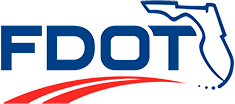History
60 Years of Roadside Wildflowers
In the early 1960s, FDOT received numerous calls asking the name of the profuse red flowers growing along State Road 19/U.S. Highway 27 south of Tallahassee. The Department’s Roadside Development Office investigated and found that when the road was built, sod was purchased from a nearby cattle farmer, who had planted Crimson clover (Trifolium incarnatum) as winter cattle forage and to enrich the soil with nitrogen.
The department purchased additional Crimson clover seed and began to plant it along Florida’s roadsides. By 1963, FDOT initiated its first Wildflower Program for the state’s rights-of-way. Aesthetics, lower maintenance costs and driver safety were its goals.
Naturalized Drummond phlox (Phlox drummondii, above) has been a prolific spring bloomer for decades along North and Central Florida roadsides and railways. One story attributes its spread to Gainesville Garden Club members who placed seed, soil and fertilizer in small gelatinous capsules and tossed them out car windows. Another tale gives credit to a railroad worker who claimed to have thrown seeds along the tracks during his many trips across the state. “By whatever method, the phlox have been greatly admired and appreciated by all travelers through North and Central Florida each March and April,” according to the FDOT booklet, Wildflowers in Florida.
| Wildflower Program History Highlights | |
|---|---|
| 1963 | Wildflower Program initiated |
| 1965 | Highway Beautification Act signed by President Johnson |
| 1973 | Operation Wildflower, supported by Lady Bird Johnson, established by Federal Highway Administration for interstate highways nationwide |
| 1973–80 | Emphasis gradually shifted from planting new stands to preserving and managing existing wildflowers |
| 1981–83 | Management of Native Vegetation along Highway Rights-of-Way published by FDOTMowing guidelines modified to provide for the preservation of wildflower areasSigns erected for designating wildflower areas |
| 1984–87 | First wildflower research project funded by FDOT — Establishment of Wildflowers along Highway Rights-of-Way |
| 1985 | Ella P. Wood Paths of Sunshine Award established by the Florida Federation of Garden Clubs and FDOT Maintenance |
| 1987 | Based on results of the 1984–87 research project, FDOT developed specifications and a “pay item” for wildflowers to be included in normal roadway construction projectsHighway Beautification Council established to provide Beautification Grants Requirement enacted by the Federal Highway Administration to include 1/4 to 1% of the estimated construction costs for the planting of wildflowers on all landscaping of roadways or other facilities using federal participation |
| 1994 | Wildflowers in Florida published — In booklet, goal was set to purchase all Florida ecotype wildflower seed by 2003 Executive Memorandum on Environmentally and Economically Beneficial Landscape Practices on Federal Landscaped Grounds issued by President Bill Clinton |
| 1996 | Effort to obtain State Wildflower License Plate re-initiated* by the Florida Federation of Garden Clubs and financially supported by FDOT (*Efforts initiated in 1987 and 1991 failed due to insufficient number of signatures.) |
| 1999 | State Wildflower License Plate enacted by the State of Florida |
| 2000 | State Wildflower License Plate goes on sale Greening the Government Through Leadership in Environmental Management issued by President George W. Bush (replaced 1994 Executive Memorandum) |
| 2001 | Seeds for the Future: A National Native Wildflower and Grass Seed Production Workshop is co-sponsored by FDOT |
| 2002 | First Florida ecotype wildflower seed purchased by FDOT |
| 2004 | Wildflower Program 2004 enacted |
| 2013 | FDOT State Wildflower Specialist hired |
| 2014 | Wildflower Management Program enacted (update of 2004 procedure) |
| 2016 | Wildflower Procedure updated |
| 2020 | Wildflower Program oversight moved from Office of Design to Office of MaintenanceWildflower Procedure expected to be updated in the 3rd quarter of 2020 |
| 2022 | Wildflower Procedure updated |

